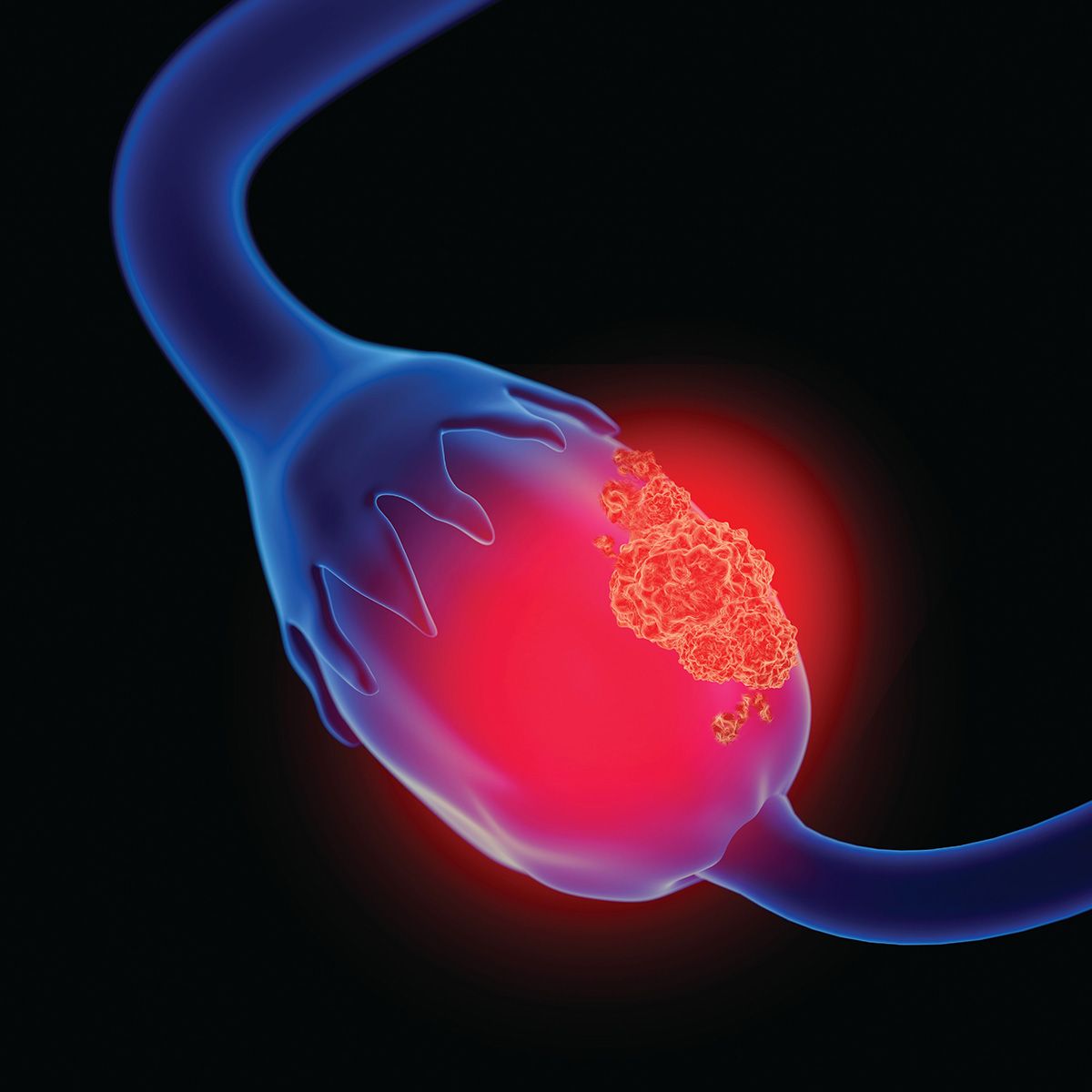Article
Maintenance Rubraca Has Potential in Ovarian Cancer
Author(s):
For women with platinum-sensitive, high-grade ovarian, fallopian tube or primary peritoneal cancer, an improved progression-free survival (PFS) was seen for those who took Rubraca (rucaparib) as a maintenance therapy, compared to placebo, according to the phase 3 ARIEL3 trial.
For women with platinum-sensitive, high-grade ovarian, fallopian tube or primary peritoneal cancer, an improved progression-free survival (PFS) was seen for those who took Rubraca (rucaparib) as a maintenance therapy, compared to placebo, according to the phase 3 ARIEL3 trial.
Clovis Oncology, the manufacturer of the PARP inhibitor, announced the results recently in a press release. The company expects to deliver expanded results at a medical meeting later this year.
Investigators found that treatment with Rubraca resulted in longer PFS for the intent-to-treat population (564 patients), as well as patients positive for homologous recombination deficiency (HRD; 354 patients) and those with BRCA mutant tumors, including germline and somatic mutations of BRCA (196 patients). The HRD-positive population included BRCA-mutant patients and BRCA wild-type with high loss of heterozygosity (LOH-high) patients.
“Based on these encouraging data, it is clear that rucaparib demonstrates a clinically meaningful impact in delaying disease recurrence in women in this trial with advanced ovarian cancer,” said Robert L. Coleman, M.D., vice chair of clinical research in the department of Gynecologic Oncology and Reproductive Medicine at the University of Texas MD Anderson Cancer Center and the US principal investigator for the ARIEL3 study.
“The PFS and safety results achieved in this study are particularly promising, because they suggest women are able to stay on rucaparib for a prolonged period of time while gaining benefit. It is also clinically significant that rucaparib not only sustained the most recent response to platinum, but in some patients also enhanced that response, including the elimination of residual tumor,” added Coleman.
ARIEL3 is a double-blind, multinational phase 3 trial of Rubraca in women with platinum-sensitive, high-grade ovarian, fallopian tube or primary peritoneal cancer. Patients were randomized in a 2-1 ratio to receive 600 mg of Rubraca twice daily or placebo. The primary efficacy analysis evaluated 3 prospectively-defined molecular subgroups in a step-down manner.
Median PFS favored Rubraca at 10.8 months versus 5.4 months in the intent-to-treat population, according to investigator review. By independent review, Rubraca improved PFS by 8.3 months.
By investigator review, median PFS was 16.6 months in the Rubraca arm versus 5.4 months with placebo. The PFS advantage associated with Rubraca was even more pronounced by independent review, 26.8 months versus 5.4 months.
Investigators said the results were consistent for the germline BRCA (130 patients) and somatic BRCA (56 patients) populations.
In HRD-positive patients, including patients with a germline or somatic BRCA mutation and those with BRCA wild-type tumors, Rubraca was associated with a statistically significant improvement in median PFS compared with placebo (13.6 months vs 5.4 months), by investigator review. Median PFS in the experimental arm was 22.9 months compared with 5.5 months with placebo as assessed by independent review.
Investigators also analyzed experimental endpoints for PFS in BRCA wild-type/HRD-positive and BRCA wild-type/HRD-negative subgroups.
In the BRCA wild-type/HRD-positive group, 158 patients achieved PFS. By investigator review, median PFS was 9.7 months in the Rubraca arm compared with 5.4 months with placebo. PFS also favored the Rubraca arm by independent review (11.1 months vs 5.6 months).
In the wild-type/HRD-negative subgroup, 161 patients achieved PFS. By investigator review, median PFS was 6.7 months for the experimental arm compared with 5.4 months with placebo. By independent review, median PFS was 8.2 months versus 5.3 months favoring the Rubraca arm.
Investigators found that 37 percent of patients in the study had measurable disease at baseline, making them evaluable for response. Among that group, the response rate was 38 percent, with a complete response rate of 18 percent in the experimental arm, double the complete response rate observed in the phase 2 ARIEL2 trial.
The response rate was 9 percent with no complete responses for patients assigned to placebo.
The most common (5 percent or more) treatment-emergent grade 3/4 adverse events among all patients treated with Rubraca were anemia/decreased hemoglobin (19 percent), ALT/AST increase (11 percent), asthenia/fatigue (7 percent), neutropenia (7 percent) and thrombocytopenia (5 percent).
The discontinuation rate was 14 percent for the Rubraca arm compared with 2.6 percent for the placebo arm. The rate of treatment-emergent myelodysplastic syndrome (MDS)/acute myeloid leukemia (AML) was less than 1 percent in the Rubraca arm was. No patient assigned to placebo experienced treatment-emergent MDS/AML.
“These results show that rucaparib has the potential to provide an enduring and important clinical benefit in women with advanced ovarian cancer, irrespective of their tumor genetics,” Jonathan Ledermann, M.D., FRCP, director of Cancer Research UK and European and ROW principal investigator for the study, said in a release. “This is a very important step forward for women with advanced ovarian cancer.”
Based on results from ARIEL2, the FDA granted an accelerated approval to Rubraca in December 2016 as a treatment for patients with BRCA-positive advanced ovarian cancer who have received at least two prior lines of chemotherapy.
Clovis plans to submit a supplemental new drug application to the FDA later this year for Rubraca as a second line or later maintenance treatment in ovarian cancer based on the ARIEL3 results.





